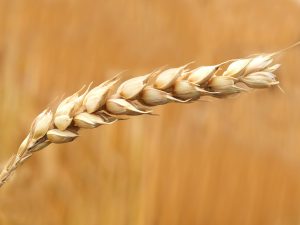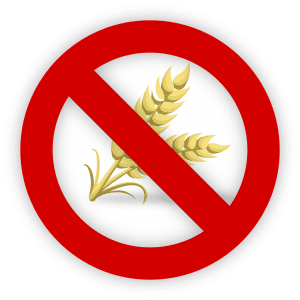Gluten gives you a stomach ache, it makes you forgetful and fat on top of that – if that is not a reason to avoid the “cereal glue”. The food industry also knows how to benefit from these statements and produces gluten-free products in abundance. An ingredient in a product that people have been feeding on for ages is now considered unhealthy and a cause of all physical ailments. We have become puzzled and ask ourselves – what is gluten intolerance anyway? Where is gluten contained and is it really bad per se?
What is gluten?

Gluten is a mixture of proteins found in the seeds of certain types of grain. When wet, these proteins combine and create what we call gluten. What many do not know: The protein mixture fulfills an important storage function in the seed by providing amino acids and protein substances to the germinating wheat plants. These are needed for growth and are therefore vitally important for the cultivation of grain. Gluten is also responsible for the elasticity of the dough – a super glue – and ensures that all baked goods can rise and stay in their shape. We owe the fact that we can have a perfectly shaped breakfast roll on Sundays thanks to a certain ingredient. And should we suddenly no longer tolerate it?
Gluten-free or not?
Before we go into the question of tolerance, we want to show you which foods contain gluten. Analyzes show that the highest gluten contents can be found in cereal grains and the products made from them. Wheat has a high gluten content – what a surprise – and a lot of the protein mixture can be found in spelled. The lowest gluten contents compared to other grains and products are found in rye. Gluten is also retained in oats and barley. However, the glue can also be found in products that are less obvious to us – particularly heavily processed foods with stabilizers cannot do without the protein mixture. Sausage, potato products, sweets and ready-made spice mixes – the probability that gluten is contained here is relatively high.
Foods containing gluten:
- Wheat and rye
- Barley and oats
- Green spelled and spelled
- Pasta and baked goods made from it
- Pretzel sticks
- Beer
- Seitan

The following foods are gluten-free in their unprocessed state:
- Fruits and vegetables
- Potatoes
- Salads
- Milk and natural yoghurt
- Vegetable oils
- Meat
- Sugar and honey
- Egg r
- Spices
- Rice and wild rice
- Amaranth and quinoa
Gluten intolerance and celiac disease – for whom gluten is really dangerous
Gluten intolerance is trendy. Because people feel good and healthy when they do without. But while doing without additives and preservatives not only feels healthy, but actually is, gluten-free diets are unnecessary for healthy people. The expert Bianca Maurer from the German Celiac Society e.V. also expressed herself in this regard with the words: “For healthy people, for whom there is no medical need such as celiac disease or wheat sensitivity, the gluten-free diet has no advantages”. Anyone who assumes that a gluten-free diet contributes to faster weight loss success is also wrong. The lack of gluten in foods must be compensated for – this often takes the form of adding sugar and fat.
The food industry benefits – real gluten intolerance and celiac disease are taken less seriously.
Consumers pay huge sums for gluten-free products – not only the purse suffers from the supposedly healthy waiver, but also those with real gluten intolerance or celiac disease. If more and more people succumb to the gluten-free trend, there is a risk of being trivialized.
Those affected by celiac disease would thus encounter less tolerance among the population – the risk of accidentally consuming gluten would increase.
Celiac disease is a chronic disease of the small intestine, which is based on an intolerance to the adhesive protein. The intake of gluten leads to inflammation of the intestinal mucosa in those affected, which causes the intestinal villi to regress. As a result, nutrient deficits arise that affect the entire body.
By the way: There is actually a gluten intolerance. However, this has little to do with trend intolerance and even less with celiac disease. Symptoms are abdominal pain, diarrhea, or constipation. In contrast to the clinical picture of celiac disease, however, the mucous membrane of the small intestine is not irritated and consequential damage to health does not occur.
In summary it can be said that a distinction must be made between real gluten intolerance, celiac disease and a trend that is one thing above all – expensive.

